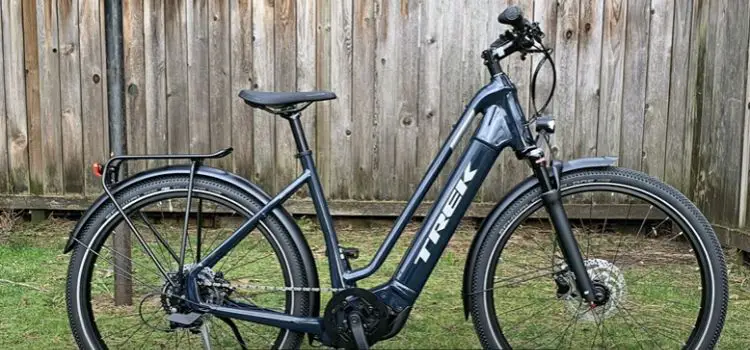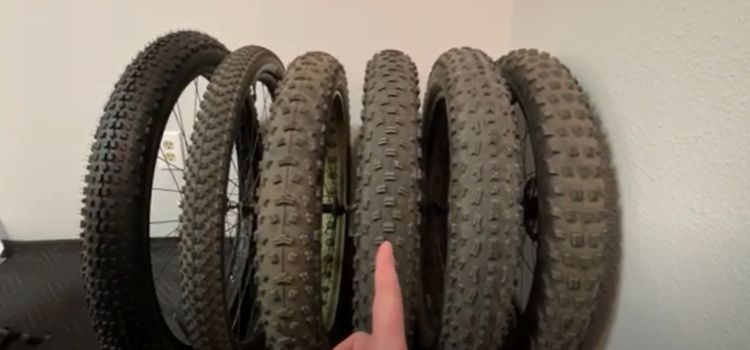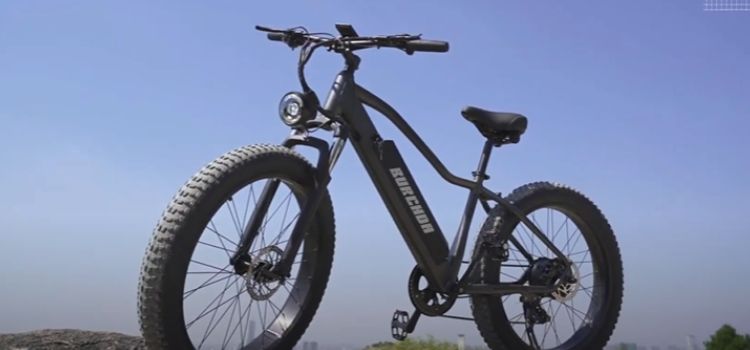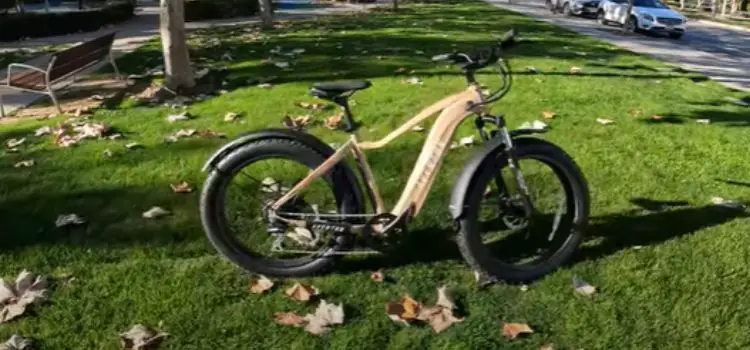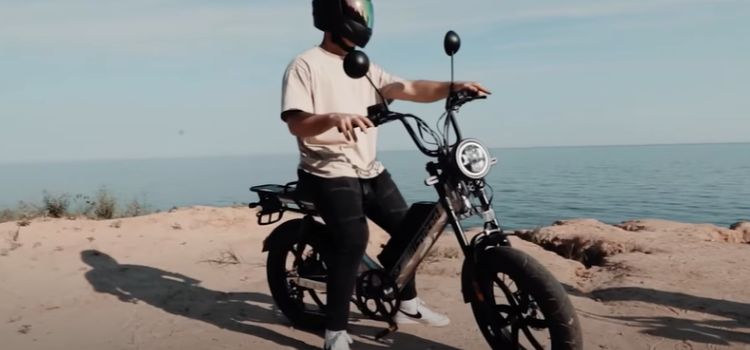How to Ride a Mid-Drive Electric Bike?
As an Amazon Associate I earn from qualifying purchases.
Riding a mid-drive electric bike (eBike) is a thrilling experience that combines the best of both worlds—the efficiency of traditional biking and the powerful assistance of an electric motor.
As mid-drive motors gain popularity, especially in the realm of electric mountain bikes (eMTBs), it becomes essential for riders to understand the nuances of riding these robust machines without causing undue strain on the drivetrain components.
This comprehensive guide aims to equip riders with the knowledge and skills needed to ride a mid-drive e-bike effectively, ensuring longevity and optimal performance.
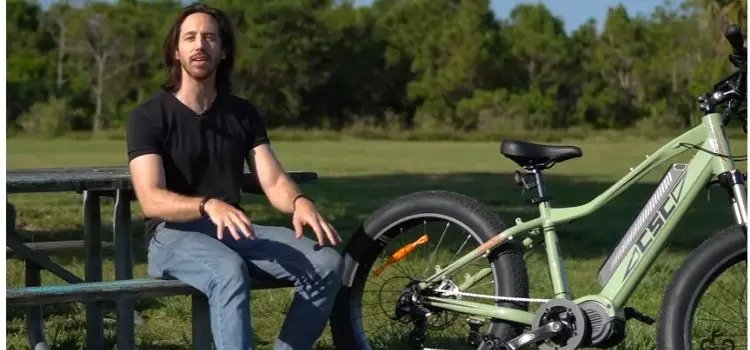
Understanding the Heart of the Beast: Mid-Drive Motors
At the core of a mid-drive eBike is its powerful mid-drive motor, which distinguishes itself from the more common hub motors. Unlike hub motors that provide assistance directly from the wheel, mid-drive motors channel power through the bike’s drivetrain, utilizing the chain and gears much like a conventional bicycle. This distinctive feature offers a host of advantages, particularly in challenging terrain and steep ascents.
Power and Torque Unleashed
Mid-drive motors are renowned for their impressive torque outputs, often ranging from 120 to a staggering 250 Newton-meters. This torque translates into raw power, allowing riders to conquer hills and challenging trails effortlessly. To put this into perspective, a mid-drive motor can deliver power equivalent to 3000 watts or more, dwarfing the capabilities of hub motors commonly found on electric bikes.
The Unique Challenges of Mid-Drive Riding
Mid-drive electric bikes (eBikes) bring a new dimension to cycling, offering unparalleled performance and versatility. However, riding a mid-drive e-bike comes with unique challenges that riders must navigate to maximize the benefits of this advanced technology. Let’s delve into the distinctive challenges faced by mid-drive riders and how to overcome them.
1. Power Surge and Chain Stress
Mid-drive motors are powerful, often delivering significantly higher torque compared to hub motors. While this power is advantageous for conquering steep hills, it can pose a challenge to the bike’s drivetrain. The immense torque generated can stress the chain, leading to potential breakage or accelerated wear. Riders must learn to manage this power surge by adopting a riding style that minimizes sudden stress on the drivetrain.
Solution: Keep the motor spinning by downshifting before coming to a stop. This prevents the motor from lugging and reduces the strain on the drivetrain when starting again.
2. Gear Shifting Precision
Unlike hub motors, mid-drives rely on the bike’s gears for optimum performance. Shifting gears under power or without precision can result in jarring transitions, causing unnecessary wear on the drivetrain components. Mid-drive riders need to develop a keen sense of when to shift gears to maintain smooth power delivery.
Solution: Never shift under power; instead, momentarily release the pedals or throttle to ensure a smooth gear change. This avoids abrupt transitions and extends the life of gears and chains.
3. Chain Alignment Challenges
Mid-drive motors often operate more efficiently across a broader range of gears than human riders prefer. This can lead to misalignment issues where the chain is at a skewed angle during high-torque situations. Improper chain alignment not only affects performance but can also accelerate wear on gears and chainrings.
Solution: Choose gears strategically, keeping the chain as straight as possible. Pay attention to chain alignment during various riding conditions to minimize unnecessary stress on drivetrain components.
4. Small Cog Vulnerability
The smallest cog in the gear cluster, typically an 11T, is more susceptible to wear and damage. Using this cog regularly can lead to premature degradation and compromise the overall integrity of the drivetrain.
Solution: Steer clear of the smallest cog whenever possible. Opt for larger cogs to distribute torque more evenly, extending the lifespan of drivetrain components.
5. DIY Build Reliability
Riders undertaking a do-it-yourself (DIY) eBike build with a mid-drive motor must ensure that the chosen components can withstand the motor’s power output. Inadequate gearing ratios, weak drivetrain components, or mismatched chainring sizes can result in reliability issues and compromise the eBike’s longevity.
Solution: Build smart by selecting components that match the power of the mid-drive motor. Pay attention to gearing ratios, chainring sizes, and the overall strength of drivetrain elements for a reliable and durable eBike.
How to Ride a Mid-Drive Electric Bike?
Riding a mid-drive electric bike (eBike) requires a nuanced approach compared to traditional bicycles or hub-drive eBikes. Mid-drive motors, located at the bike’s central point, offer significant advantages, especially in challenging terrain and steep ascents. To make the most of your mid-drive e-bike while ensuring the longevity of its components, follow these essential tips:
1. Understand the Mid-Drive Motor
Before hitting the road, grasp the fundamentals of how a mid-drive motor operates. Unlike hub motors, mid-drives propel the bike through the drivetrain, using the chain and gears. This unique feature provides more torque, making mid-drives ideal for climbing hills and navigating diverse terrains.
2. Keep the Motor Spinning
A fundamental rule for mid-drive eBike riders is to keep the motor spinning. When climbing hills or encountering resistance, allowing the motor to spin freely prevents excess heat generation. The sheer power of mid-drive motors necessitates smooth, uninterrupted rotations to avoid premature wear on components.
3. Downshift Before Stopping
Whether approaching a stoplight or the end of a trail, downshift before coming to a complete stop. This practice prevents the motor from lugging—struggling against resistance while stationary. Lugging can lead to stress on the drivetrain, potentially causing damage. Downshifting ensures a smooth start without undue strain.
4. Upshift Strategically
Just as downshifting is crucial, strategic upshifting enhances efficiency. Upshift when the motor reaches its maximum speed in the current gear. This allows the motor to spin faster and contribute more power to the ride. Effective upshifting prevents unnecessary strain on components, optimizing the overall riding experience.
5. Never Shift Under Power
Avoid shifting gears while actively applying power to the pedals. Even with a gear sensor, it’s advisable not to rely on it entirely. Shifting under power can lead to abrupt gear changes, causing stress on the drivetrain. Instead, momentarily pause your input, execute the shift, and resume pedaling or throttle application.
6. Maintain Chain Alignment
Mid-drive motors operate effectively with a straight chain alignment. Ensure that your chain runs parallel to the bike’s frame, avoiding skewed angles. Proper chain alignment reduces wear on components, contributing to a smoother and more reliable ride. Be mindful of your gear choices to maintain optimal alignment during various riding conditions.
7. Steer Clear of the Smallest Cog
Avoid using the smallest cog in your gear cluster, typically an 11T. This cog is more prone to wear and tear and may compromise chain alignment. Opt for larger cogs to distribute torque more evenly and extend the lifespan of your drivetrain components.
8. Build Smart for Longevity
If you’re involved in a DIY e-bike build, choose components capable of handling the power output of mid-drive motors. Select appropriate gearing ratios, ensure the strength of drivetrain components, and pay attention to chainring sizes for optimal performance and longevity.
By following these guidelines, riders can unlock the full potential of mid-drive electric bikes. Whether conquering challenging terrains or enjoying a leisurely ride, understanding the intricacies of mid-drive motor systems ensures a more enjoyable and reliable e-bike experience.
Conclusion
Mastering the art of riding a mid-drive electric bike is a rewarding journey that requires a blend of understanding, skill, and respect for the machine’s capabilities.
By following the rules and recommendations outlined in this comprehensive guide, riders can not only navigate the unique challenges posed by mid-drive motors but also enhance their overall riding experience.
Whether conquering steep hills or cruising through urban landscapes, a well-informed rider can extract the full potential of a mid-drive e-bike, ensuring both performance and longevity. Embrace the power, respect the machine, and ride like a true mid-drive maestro.
Related Article
Learn How To Fix Brakes On Electric Bike?
Read: Are Electric Bikes Allowed In Cades Cove
Learn How To Change A Tire On An Electric Bike
Learn How To Turn On Headlight On Electric Bike?
Amazon and the Amazon logo are trademarks of Amazon.com, Inc, or its affiliates.


